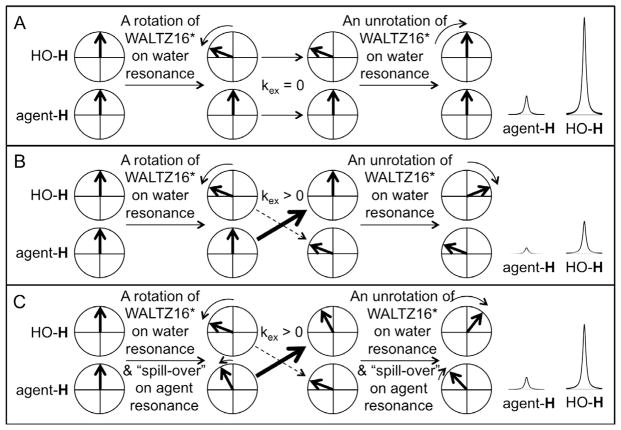Fig. 1.
Schematic of the QUESPOWR method. (A) The OPARACHEE MRI protocol with a WALTZ16* pulse train at the water resonance causes no loss in detectable MR signal from water in the absence of chemical exchange. The WALTZ16* pulse train causes a rotation of the water’s net magnetization in the ZY plane (shown as a 60° rotation in the schematic), which is eventually “unrotated” to return the net magnetization to equilibrium. In practice, WALTZ16* performs a combination of rotations and unrotations, but the concept is the same as shown in the schematic. The effects of MR relaxation are assumed to be negligible in this schematic. (B) The same protocol causes a loss in detectable MR signal of the water due to non-zero chemical exchange (kex) during the WALTZ16* pulse train. The chemical exchange occurs stochastically during the pulse train, and only one example of chemical exchange part-way through the pulse train is shown in the schematic. Chemical exchange from the agent to water is emphasized with a thick arrow, while chemical exchange is de-emphasized with a dashed arrow, to indicate the direction of exchange that is important for QUESPOWR. (C) “RF spill-over” of the WALTZ16* pulse train at the MR frequency of the agent causes rotation and “unrotation” of the agent’s net magnetization in the ZY plane. Coupling the agent’s rotation of magnetization with chemical exchange causes only a partial loss in detectable MR signal of the water. Therefore a QUESPOWR MRI acquisition, consisting of a series of OPARACHEE MRI acquisitions over a range of RF powers for the WALTZ16* pulse, shows a RF power-dependence on detectable water signal.

